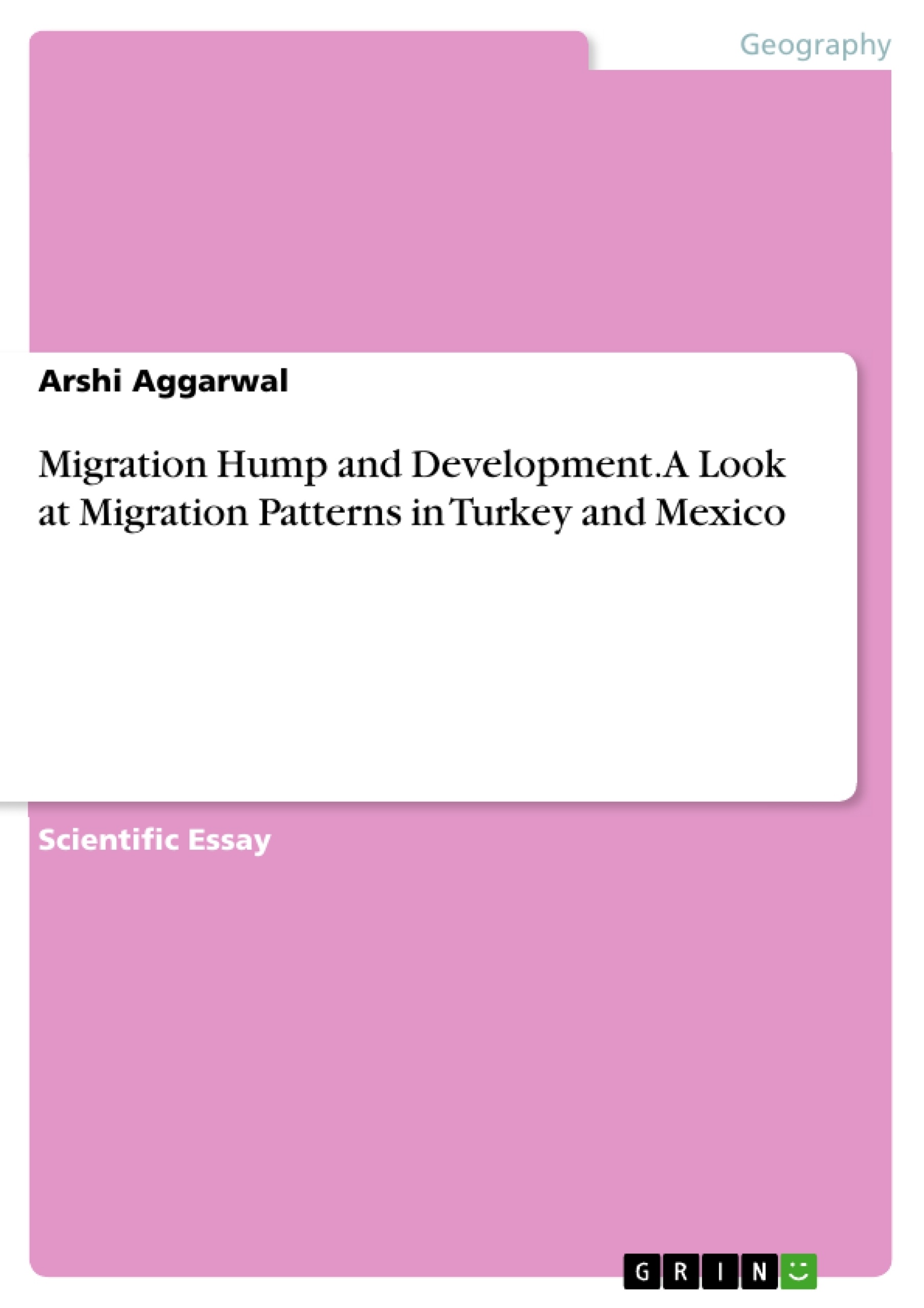Migration hump refers to the short term influx in migration instilled by trade and economic policies as compared to the expected migration trend without such initiatives. The migration hump theory, coined by Martin and Taylor in 1996, articulates that trade and migration are complimentary in short or medium term and substitutes in long term. Since 1991, there is growing recognition of the fact that the poorest countries are not the sending nations. People need resources to migrate, thus, initially developmental policies such as free trade and foreign direct investment enable people to migrate, however, in a long run same policies and additional remittances from diaspora empower countries to establish infrastructure to preserve their human capital and even instil return migration. However, one model does not fit all. In case of systematic failure of developmental policies due to internal or external pressures hump can transform into plateau, which means a state of continuous ‘brain drain’. This essay attempts to explain the notion of migration hump and plateau in relation to migration and development through optimistic and pessimistic views. The discourse explains the process of positive to negative migration through the example of Turkey and continuous excessive migration process through Mexico.
Inhaltsverzeichnis (Table of Contents)
- Introduction
- Migration Hump
- Migration and Development
- Conclusion
Zielsetzung und Themenschwerpunkte (Objectives and Key Themes)
This essay aims to provide an explanation of the migration hump theory and its relevance to development processes. It explores the relationship between migration and development through both optimistic and pessimistic perspectives. The essay utilizes the case studies of Turkey and Mexico to illustrate the complexities of migration patterns and their impact on development.
- The migration hump theory and its implications for development
- The role of trade and economic policies in shaping migration patterns
- The potential benefits and drawbacks of migration for sending and receiving countries
- The importance of remittances in development processes
- The contrasting migration experiences of Turkey and Mexico
Zusammenfassung der Kapitel (Chapter Summaries)
The introduction defines the concept of migration hump, which refers to the short-term increase in migration triggered by trade and economic policies. It contrasts this with the expected migration trend in the absence of such initiatives. The chapter also presents the core argument of the essay: the migration hump theory, coined by Martin and Taylor, suggests that trade and migration are complementary in the short-term but substitute in the long-term.
The "Migration Hump" chapter provides a detailed explanation of the migration hump phenomenon through graphical representation and historical examples. It emphasizes the initial short-term influx and subsequent long-term reduction in migration from the sending country. The chapter explores the historical migration patterns in Europe and Asia to support the theory's empirical relevance.
The chapter "Migration and Development" delves into the crucial debate surrounding the relationship between migration and development. It presents two contrasting perspectives: migration optimism, which emphasizes the positive aspects of migration, such as remittances, knowledge transfer, and brain gain; and migration pessimism, which focuses on the negative effects, such as brain drain, resource exploitation, and unequal trade opportunities.
Schlüsselwörter (Keywords)
The primary keywords and focus topics of this essay include migration hump, migration plateau, development, trade, economic policies, remittances, brain drain, brain gain, migration optimism, migration pessimism, Turkey, and Mexico.
- Arbeit zitieren
- Arshi Aggarwal (Autor:in), 2014, Migration Hump and Development. A Look at Migration Patterns in Turkey and Mexico, München, GRIN Verlag, https://www.grin.com/document/286322



